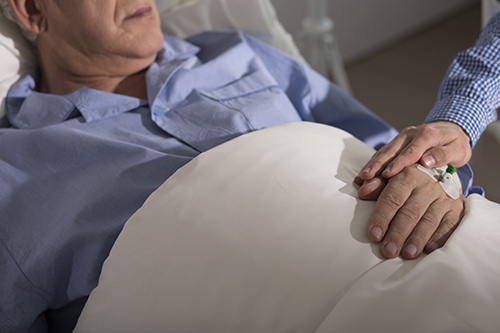

The findings suggested that if GPs had a role in preventing hospitalisations at the end-of-life, it was likely to be much earlier in patients’ lives, the researchers said.
The researchers, from the Centre for Big Data Research in Health at the University of New South Wales and the Centre for Health Research at Western Sydney University, said that about 5% of the total health budget was spent on the care of people aged 65 years and over in their last year of life. They hypothesised such costs might be contained by delivering better end-of-life care through primary, community and palliative care services, they suggested, but the extent of this was unknown.
To address the question, they used linked data to analyse the relationship between costs of hospital ED and Medicare-funded outpatient and pharmaceutical services in the last six months of life among 14,819 individuals from the 45 and Up Study who died during follow-up, and those patients’ use of GP services in the 7‒18 months before death.
Hospitalisation common
Almost 85% those who died had at least one hospitalisation in the last six months of life, and with total healthcare costs averaging $20,453, the study found.
However, greater use of GP services by individuals in the 7‒18 months before death was actually associated with higher total healthcare costs in the six month period before death, largely due to higher spending on outpatient services and pharmaceuticals, according to the findings, published in BMJ Open.
The study found no association between use of GP services in the 7‒18 month before death and hospital inpatient costs in the last six months of life ‒ in contrast to a previous US study that showed an inverse relationship between patients’ use of GP services and total healthcare costs at the end of life.
While 13% of the hospitalisations in the last six months of life met the criteria for definition as “preventable hospitalisations”, the authors said the absence of any relationship between GP visits and hospitals costs suggested that any role GPs had in preventing end-of-life hospitalisations was likely to lie much earlier in life and in the causal pathway for conditions.
Need for multidisciplinary care
“Findings of a positive association between GP visits and total cost in this study suggested that hospital care at the end of life could reflect the ‘real’ need for multidisciplinary care for those with deteriorating health and high risk of mortality, rather than admissions that could be avoided,” they wrote.
However, they added that the study findings did not preclude a key role for GPs in containing end-of-life costs, with potential GP involvement including discussions about end-of-life treatment preferences and advance care planning, delivering care in aged care homes and participating in home-based palliative care.
The 45 and Up Study is the largest ongoing study of healthy ageing in the Southern Hemisphere involving a quarter of a million NSW residents, and is an accessible resource that researchers and policy-makers can apply to use.
Find out more
- Read the full paper in BMJ Open: Relationship between use of general practice and healthcare costs at the end of life: a data linkage study in New South Wales, Australia
- Researchers, find out how our Analysis for Policy program can help you use the 45 and Up Study to answer your research questions.





